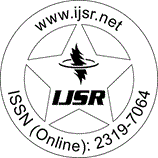Downloads: 138
Kenya | Computers in Biology and Medicine | Volume 7 Issue 2, February 2018 | Pages: 537 - 541
Computer Assisted Characterization of Virulence Factors among Helicobacter Pylori Strains
Abstract: The global prevalence of Helicobacter pylori infection is more than 50 % and varies significantly between developed and developing countries [4, 28, 32]. The fact that the mode of transmission is still not yet clear and the bacterium has been classified as a carcinogen raises concern for a concerted effort in initiating relevant research towards gaining more in-depth knowledge on the bacterium [14]. Application of bioinformatics tools to the sequenced data provides an avenue for more information that could be analyzed to further help in designing precise lab experiments that would direct more knowledge on virulence. Identification of a given strain can help in designing primer specific amplicons to target the virulent strain which can be both strategic in drug development and also designing of diagnostic tool.
Keywords: Helicobacter pylori, comparative genomics, virulent factors, protein structure prediction, proteomics
How to Cite?: Akoo Benedict, Dr. Johnson Kinyua, Dr. Daniel Maina, "Computer Assisted Characterization of Virulence Factors among Helicobacter Pylori Strains", Volume 7 Issue 2, February 2018, International Journal of Science and Research (IJSR), Pages: 537-541, https://www.ijsr.net/getabstract.php?paperid=ART20179719, DOI: https://dx.doi.org/10.21275/ART20179719
